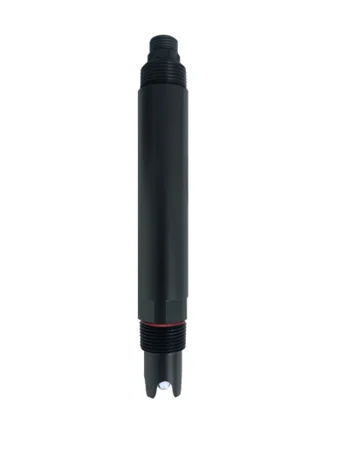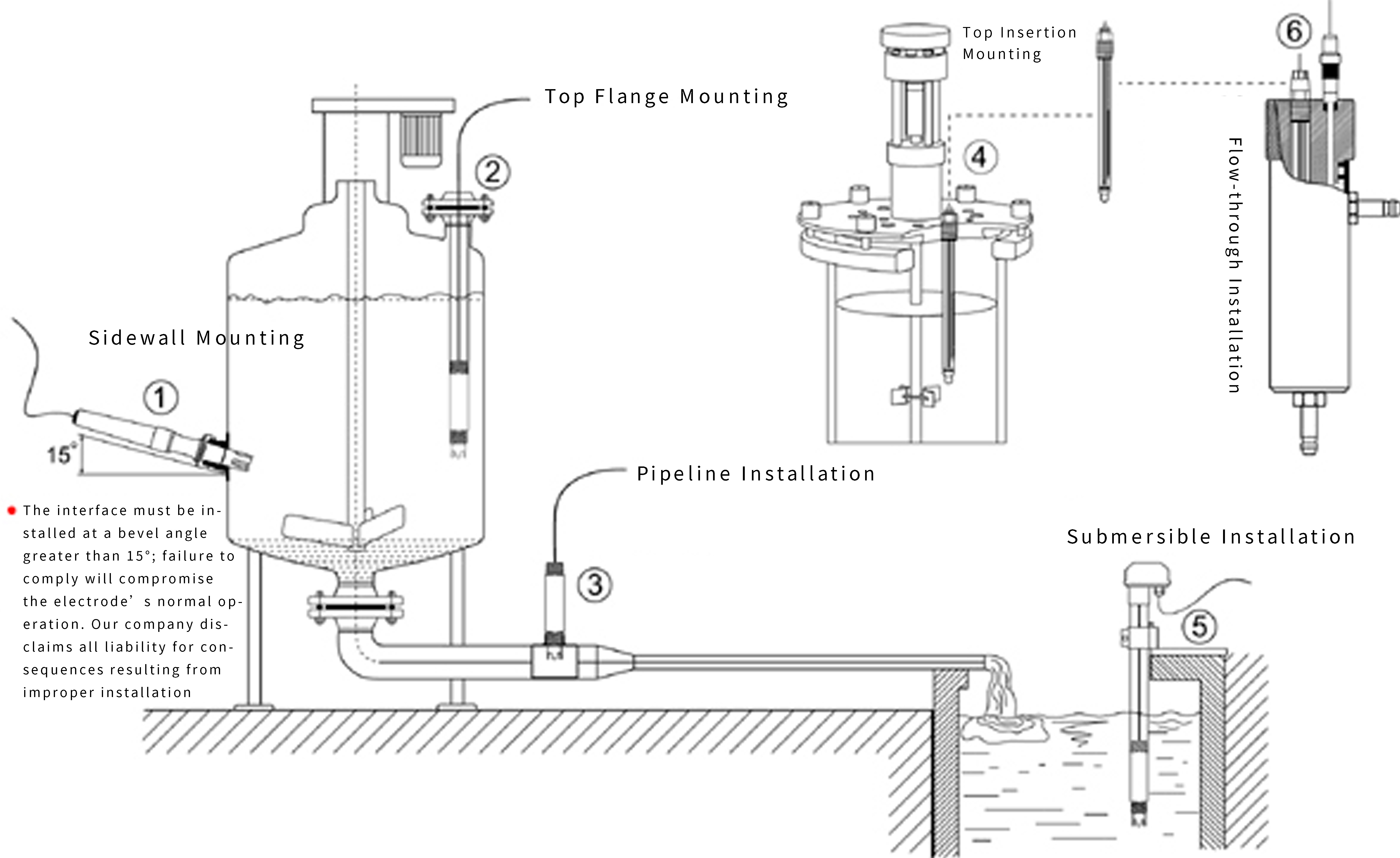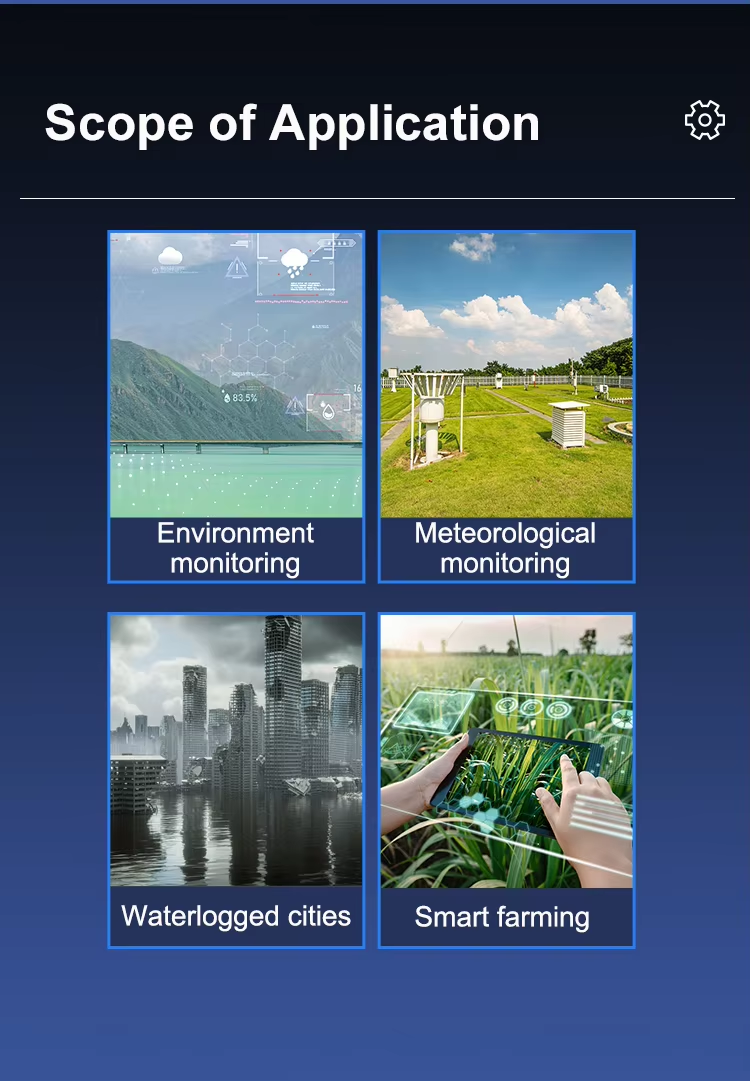

Communication method: RS485(Modbus RTU)
Measurement range: 0.01~100mg/L
Measurement precision: ± 5%
Measurement principle: Electrode method
Voltage: DC12V~DC24V
Protection class: IP68


Measurement precision: ± 5%
Measurement principle: Electrode method
Voltage: DC12V~DC24V
Protection class: IP68
The Ammonia Nitrogen Sensor determines ammonia concentration based on the ion-selective electrode (ISE) principle.
When the sensing membrane of the electrode comes into contact with the water sample, ammonium ions (NH₄⁺) selectively interact with the electrode’s sensitive membrane, generating a potential difference.
This potential is then converted into an electrical signal according to the Nernst equation, which reflects the logarithmic relationship between ion activity and electrode potential.
Through signal conditioning and digital processing, the system outputs accurate and stable ammonia nitrogen concentration readings.
White wire: 485B
Before powering the sensor, always verify the wiring sequence to prevent potential damage caused by incorrect connections.
As the cable may be submerged in water (including seawater) or exposed to air for extended periods, it must be corrosion-resistant. All connection points should be properly waterproof-sealed to ensure long-term operational reliability.
|
Interferences (moles/liter) |
10-4 M Ammonium |
10-3 M Ammonium |
10-2 M Ammonium |
|
H+ |
< 2 |
< 1 |
< 1 |
|
Li+ |
0.2 |
0.5 |
0.5 |
|
Na+ |
0.005 |
0.08 |
0.8 |
|
K+ |
7*10-5 |
6*10-4 |
6*10-3 |
|
Cs+ |
0.003 |
0.05 |
0.5 |
|
Mg3+ |
> 0.5 |
> 1 |
> 1 |
|
Ca2+ |
> 0.2 |
> 1 |
> 1 |
|
Sr2+ |
> 0.2 |
> 1 |
> 1 |
|
Ba2+ |
> 0.1 |
> 0.5 |
> 0.5 |
|
Zn2+ |
0.001 |
0.01 |
0.1 |
|
N2H5+ |
> 0.1 |
> 0.1 |
>0.1 |
|
Bu4N+ |
1*10-5 |
1*10-4 |
1*10-3 |
5. Sensor Calibration
Zero Point Calibration
1. Immerse the sensor in a zero-point standard solution.
2. Wait approximately 5 minutes until the reading stabilizes.
3. Confirm that the value falls within the allowable error margin.
4. If deviation occurs, perform zero-point calibration (refer to the calibration appendix).
Slope Calibration
1. Immerse the sensor in a slope standard solution.
2. Wait 5 minutes for stabilization, then verify the reading accuracy.
3. If deviation is detected, carry out slope calibration following standard procedures.
1. Operating on the scattered light principle with a built-in temperature sensor;
2. Supports RS-485 and Modbus/RTU protocols;
3. Optical fiber structure with strong resistance to external light interference;
4. Infrared LED light source for high stability;
5. IP68 waterproof rating, submersible up to 20 meters depth;
|
Item name |
Parameter |
|
Measurement parameter |
Ammonia |
|
Measurement principle |
Electrode Method |
|
Measurement range |
0.01~100mg/L |
|
Measurement precision |
±5% |
|
Repeatability |
±5% |
|
Resolution |
0.01mg/L |
|
Voltage |
DC12V~DC24V |
|
Communication method |
RS485(Modbus RTU) |
|
Protection class |
IP68 |
|
Extension cable |
5M(Customizable) |
|
Function features |
The sensor is equipped with dynamic temperature compensation for the sample |
|
|
Digital sensor with robust anti-interference capability and long-distance signal transmission |
|
|
The Sensor features power supply positive and negative polarity misconnection protection, RS485 A/B terminal power misconnection protection |
|
|
No chemical reagents required; eliminates secondary pollution |
|
The product features excellent waterproof and dustproof capabilities, along with high measurement accuracy and other technical characteristics |
|

